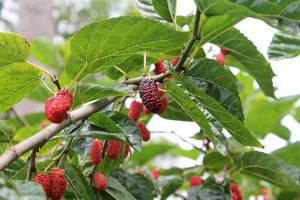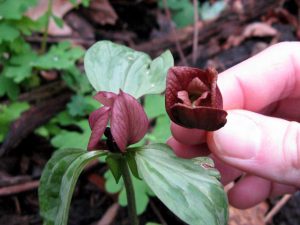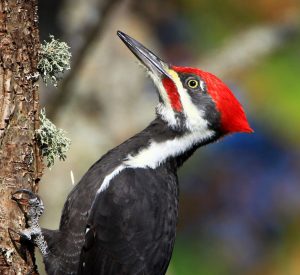Avon Woods Nature Preserve – A Neighborhood Gem
- Dec 8, 2020
Did you know??
Avon Woods Nature Preserve is home to hundreds of native tree and plant species. Inside this small, 14.5 acre green space you’ll find several trees, shrubs and wildflowers, some of which are infrequently found throughout other area parks. Some unique species you can find are:

Red mulberry – This is a native under story tree that can’t be found in many other parks. Another unique tree species found in Avon Woods are yellow buckeye trees.

Prairie Trillium – This is a species of perennial herbaceous flowering plants. It grows in mesic forests (environment with lots of moisture) and is known by other names, such as bloody nose, red trillium and reflexed trillium. Other unique flowers found in Avon Woods are wild hydrangeas and yellow passionflower.

Resident coyotes and foxes – It’s unique to have these two animals residing in such a small green space.

Pileated woodpeckers and bluebirds – Pileated woodpeckers are mostly black with a prominent red crest. Bluebirds are medium-sized birds that feed on insects, other invertebrates and fruit.
This ecosystem diversity is not entirely by accident – a dedicated group of volunteers that walk the trails each day also remove harmful invasive species, such as English ivy, winter creeper vines and honeysuckle bushes. Also, Avon’s role in the ecosystem at large – the golf course, nearby cemetery, and even residents’ backyards, are actually part of a much bigger habitat that the animals depend upon (for water sources, shelter, food or space). Many people think of golf courses as dead space, but this particular one, managed by Cincinnati Recreation Commission, is modeled after the Audubon style, which helps offer even more resources – portions are allowed to go wild for cover; it is not as manicured as other courses, which is good for the environment as a whole.
What can you do to help?
Planting native species in your yard is a great support! Being so close to a nature preserve has many benefits, but it is a challenge to “keep up with the creep” of incoming non-native plants from neighboring yards. Seeds and vines often find their way in over the years. A few invasive species making their way inside the preserve are: Miscanthus sinesis Grass and Common Buckthorn (Rhamnus cathartica). If you are looking for some easy native alternatives for your landscape, consider these:
- Shrubs for partial shade: spice bush, witch hazel
- Grasses for sun: big bluestem (tall), little bluestem (short)
- Flowers for pollinators: echinacea, black-eyed-susan or false [ox eye] sunflowers
For more resources, see The Ohio Invasive Plant Council: https://www.oipc.info/ and https://www.ohionativeplantmonth.org/
Written by Rachel Rice, Cincinnati Parks Naturalist
